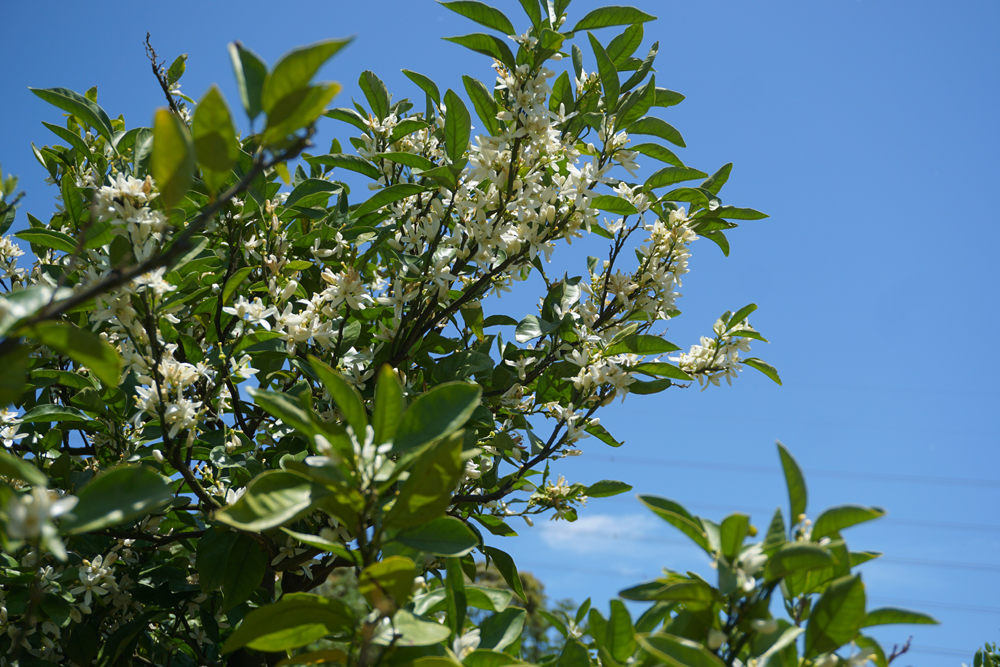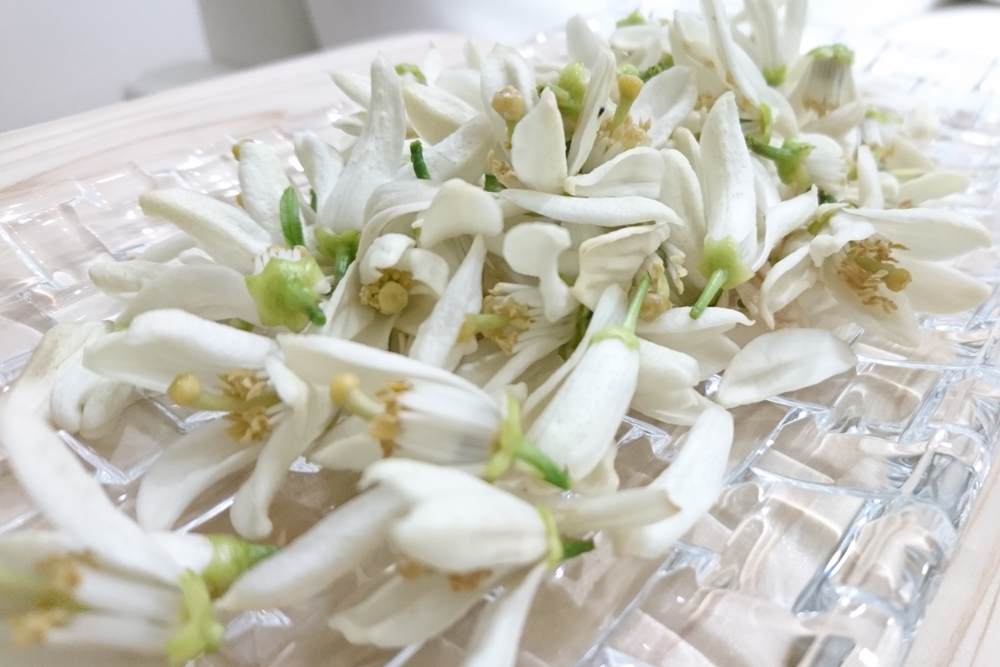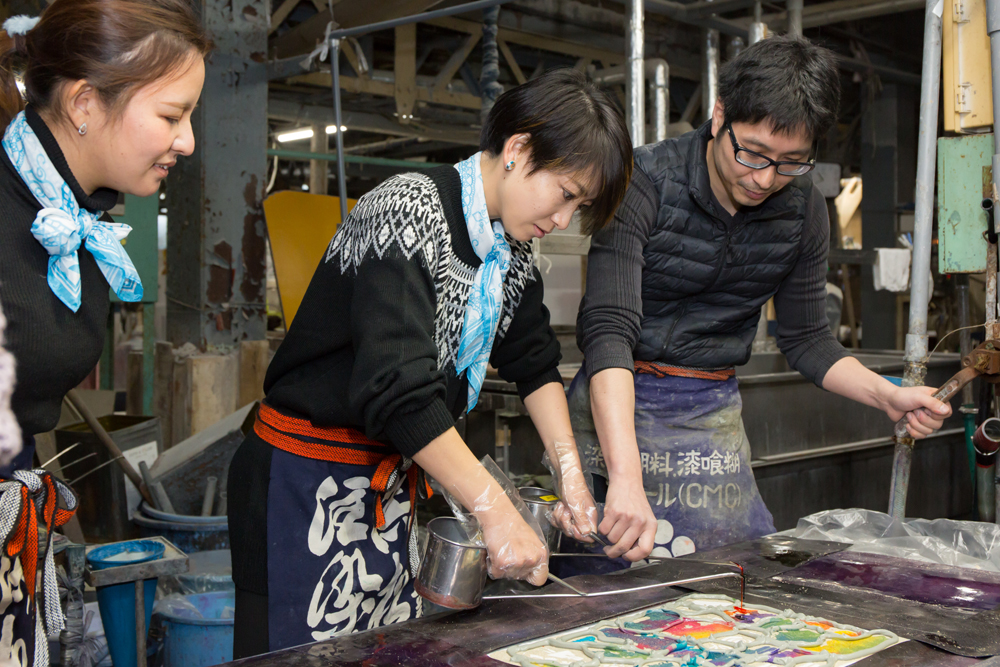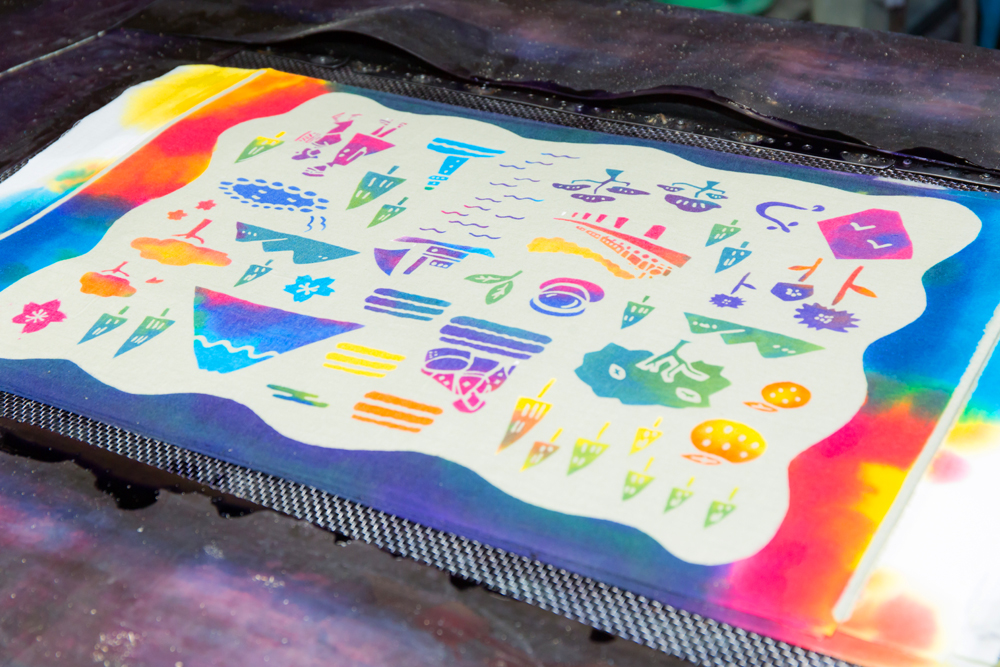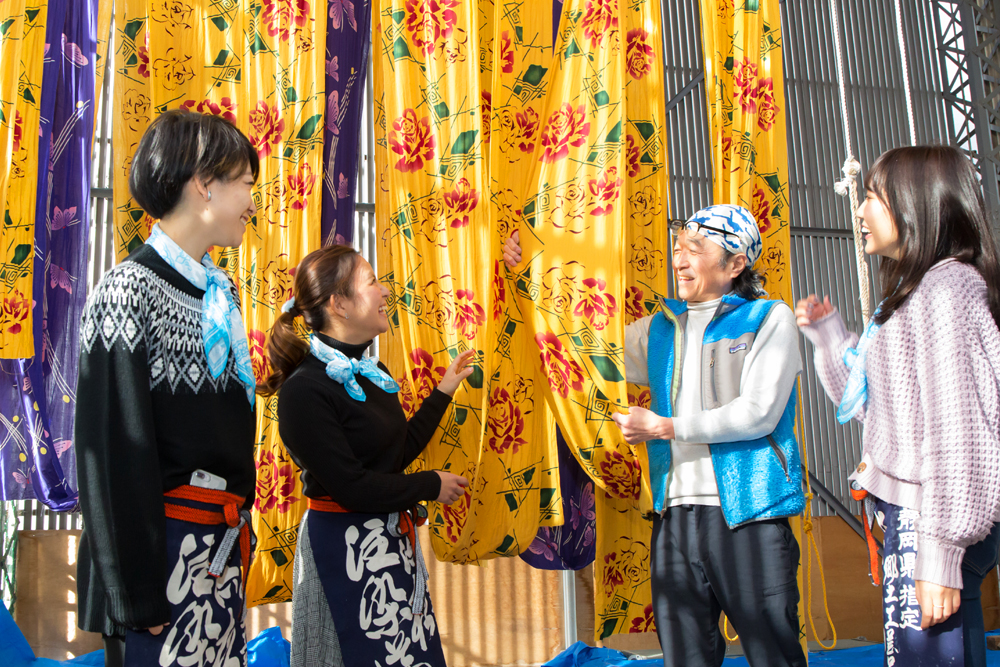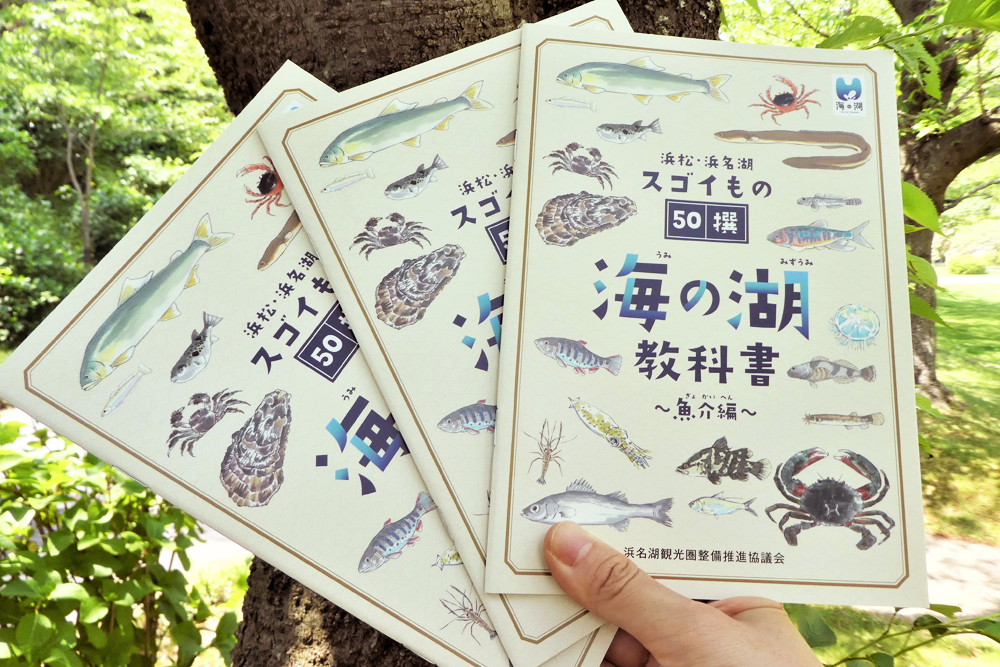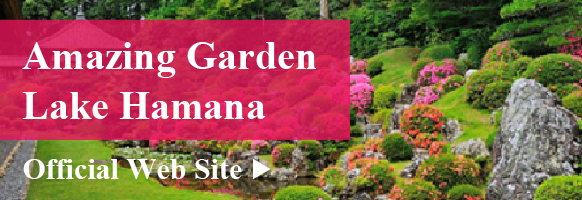Get to Know Hamamatsu
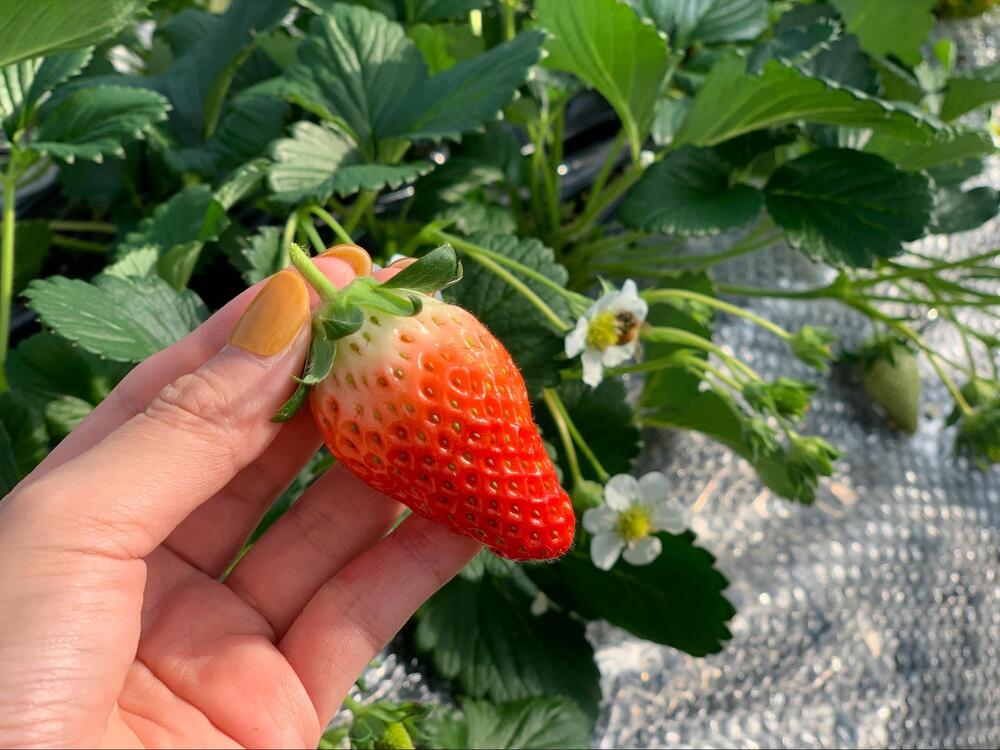
- Enjoy
- Eat
Hamamatsu Strawberry Picking|60 minutes all-you-can-eat! Enjoy spring with Kashima Harvest
The most representative fruit that signals the arrival of spring is strawberries, which turn bright red.
In particular, “strawberry picking” where you can stuff your mouth with freshly picked strawberries is a recommended activity in spring.
In fact, Shizuoka Prefecture is one of the leading strawberry producing areas in Japan. So this time, we visited Kashima Harvest, a recommended strawberry picking spot in Hamamatsu, for an interview.
Kashima Harvest strawberry picking!
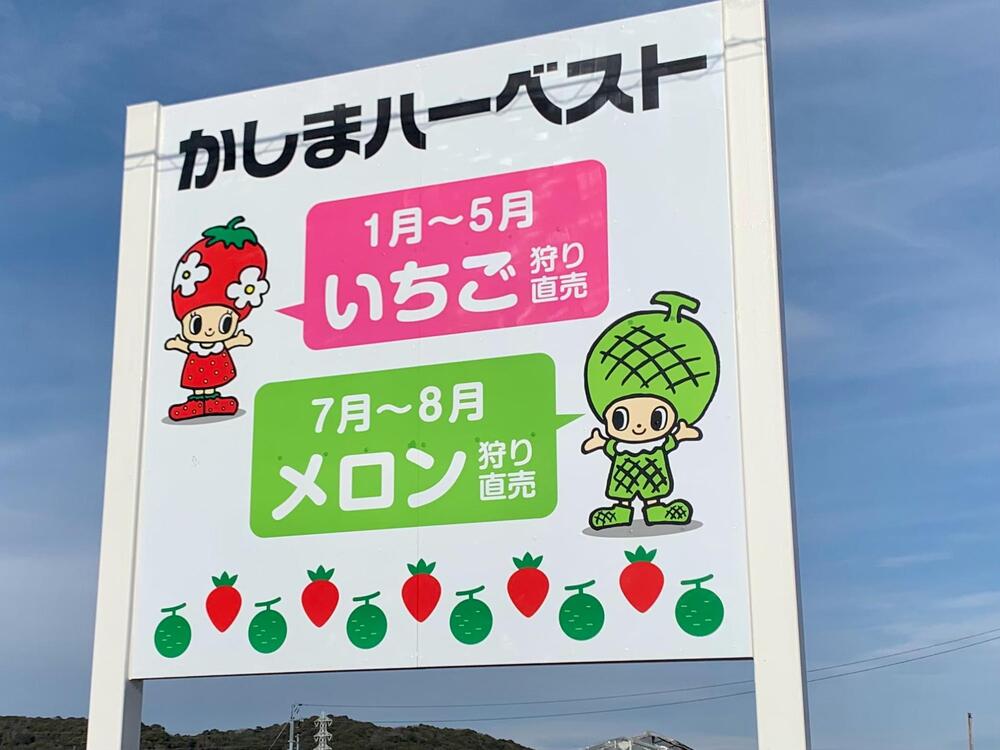
This time, I visited Kashima Harvest located in Kurematsucho, Chuo Ward, Hamamatsu City.
Kashima Harvest is located less than 10 minutes by car from Lake Hamana and Kanzanji Onsen, which are tourist attractions in Hamamatsu City.
There are 9 houses lined up on the premises, and the insides are very spacious!

The largest house is the size of two basketball courts (800 square meters), so you can enjoy strawberry picking in a relaxed manner.
This time, we asked Mr. Toshihiro Miyamoto of Kashima Harvest about his commitment to strawberry cultivation and how to enjoy strawberry picking at Kashima Harvest.
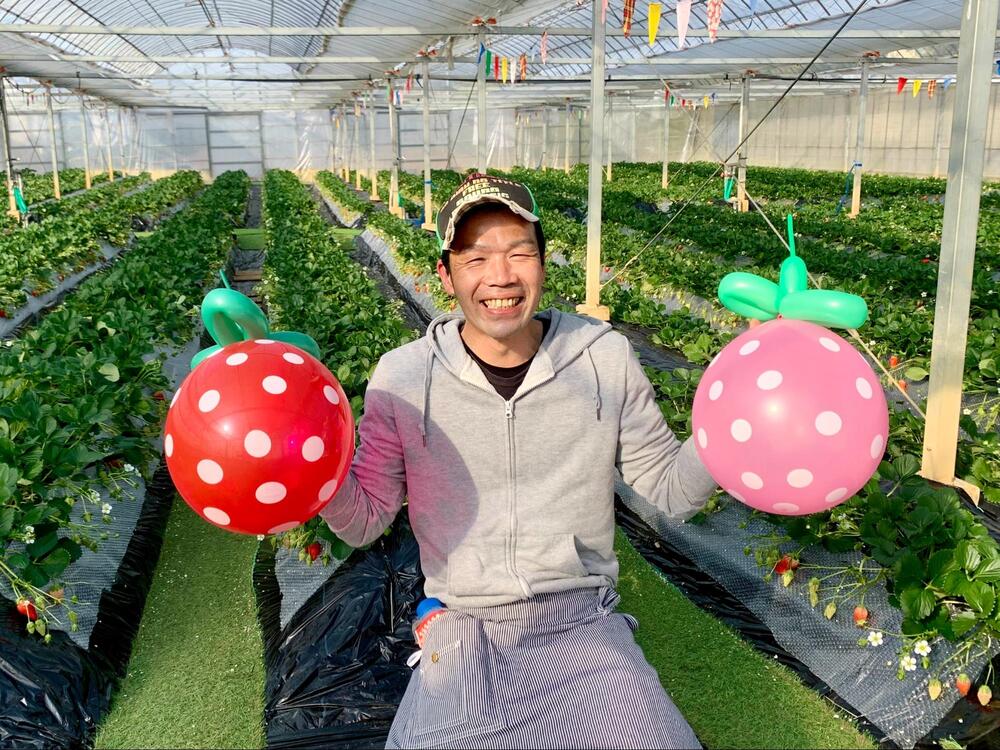
*Kashima Harvest Mr. Toshihiro Miyamoto
No matter what you eat, it's sweet and delicious! "Akihime" born in Shizuoka
At Kashima Harvest, we grow the strawberry variety “Akihime,” which was born in Shizuoka.

Akihime is a variety with a strong sweetness and low acidity, making it a variety that can be enjoyed by people of all ages, from children to the elderly.
When strawberries are fully ripe, they turn bright red near the stem. Fully ripe Akihime has a strong flavor, and its appeal is that you can enjoy its mellow aroma and sweetness!
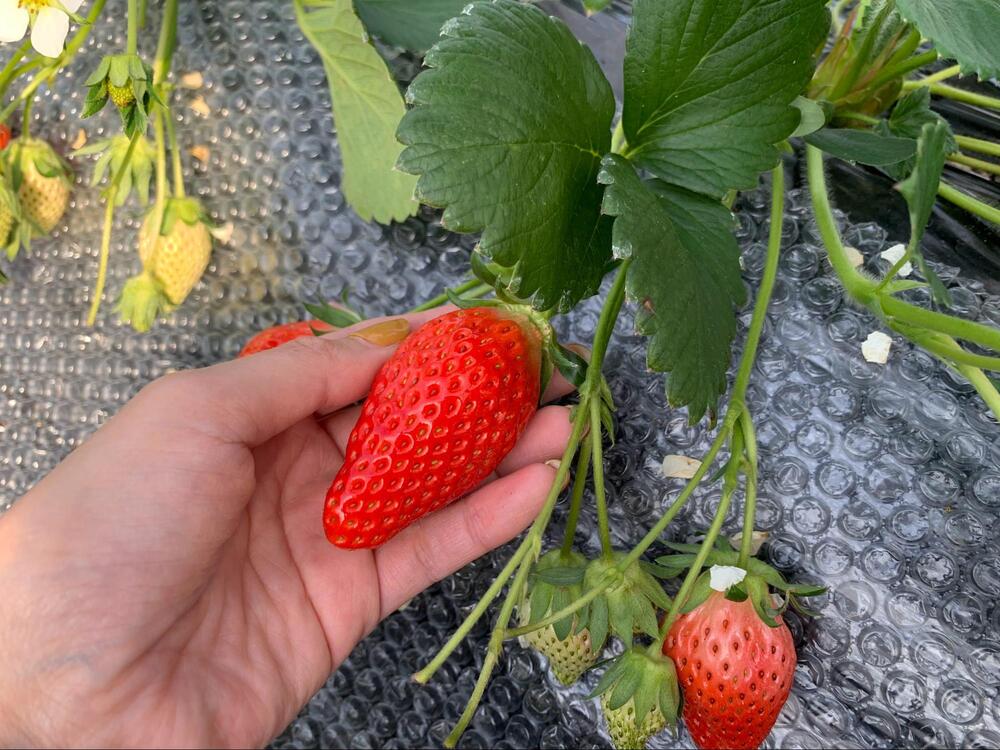
Because the strawberries are low in acidity, even strawberries that are a little white near the stems and are just one step away from ripening have a fresh, sweet taste. “The appeal of Akihime is that no matter what you eat, it’s delicious!” says Mr. Miyamoto.
Furthermore, Kashima Harvest uses “soil cultivation,” which allows us to grow delicious strawberries by firmly planting roots in the soil.
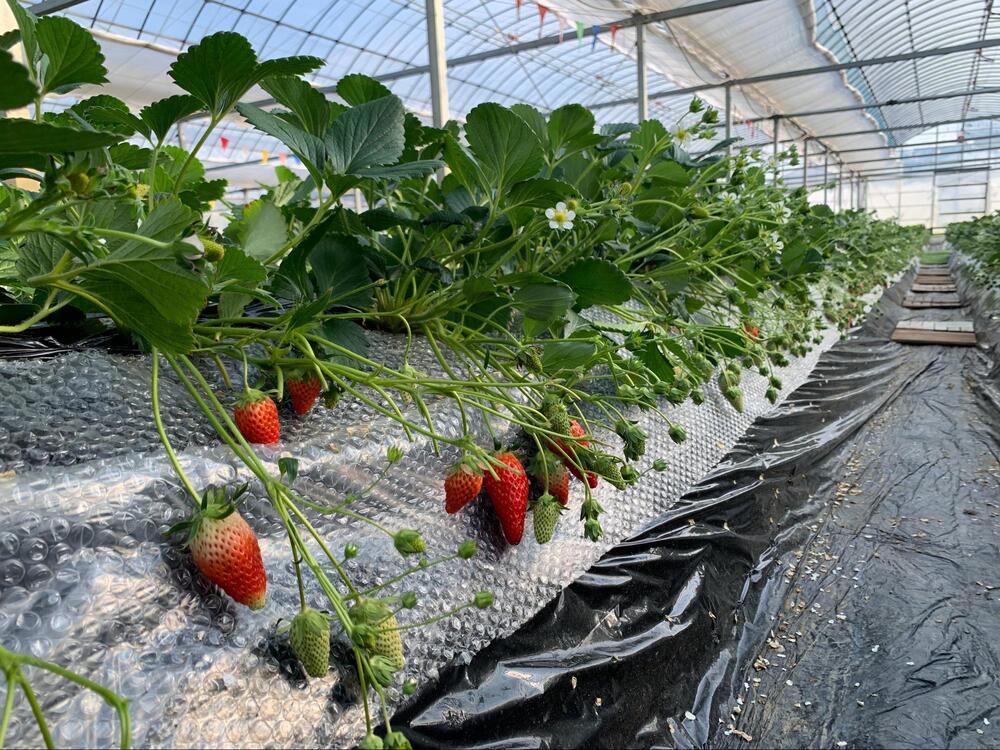
They are particular about using organic fertilizers, and seem to grow them carefully using fertilizers such as rice husks and rice bran.
In addition, small bees could be seen flying around the strawberry flowers inside the greenhouse.

“Thanks to the help of these bees with pollination, we are able to grow strawberries that are well-shaped,” Mr. Miyamoto tells us.
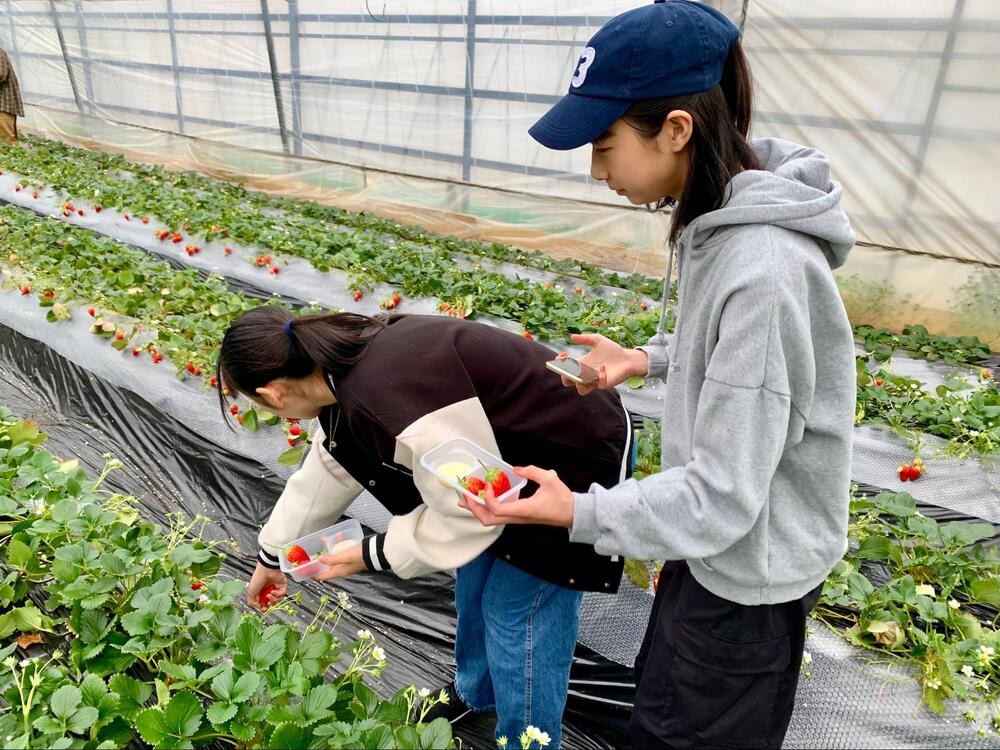
On this day, the girls who had come to pick strawberries were overjoyed as they looked at the many bright red strawberries that had ripened, exclaiming, “It’s so sweet and delicious!”

All-you-can-eat for 60 minutes! Enjoy leisurely with your family
Kashima Harvest’s strawberry picking is a 60-minute event that you can enjoy at your leisure.
The schedule is a little long, so you can enjoy strawberry picking at your own pace without having to rush.
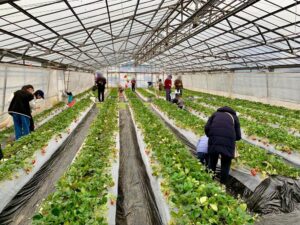
“If you’re planning on coming to pick strawberries with your family on your special holiday, we want to provide you with an unforgettable time, so we at Kashima Harvest have adopted a slightly longer 60-minute time frame.” Mr. Miyamoto spoke to us.
Especially for moms and dads with small children, 30 minutes can go by in the blink of an eye if they are paying close attention to their children. However, if you only have 60 minutes, you and your family can enjoy strawberry picking at your leisure!

“Strawberries that are ready to eat are fully ripe and bright red all the way down to the bottom of the stems, so we recommend the large ones,” he told me, so I immediately started looking for large, bright red strawberries.
Mr. Miyamoto’s kind words warmed my heart as he said, “I’m sure everyone is busy on a daily basis.I’d be happy if you could take some time to relax, even if it’s just the time you took to go strawberry picking with your family.” I did.
Additionally, Kashima Harvest has many ways to enjoy strawberry picking with your family.
First of all, this is the rest area.

Part of the greenhouse is covered with artificial grass, and there are benches where you can sit and take a break while picking strawberries.
It’s a long time at 60 minutes, so it’s the perfect space when you want to sit down and take a break.
“Many customers come in three generations with their grandparents, and you can see some heartwarming scenes where the grandparents sit on the bench and the grandchildren pick strawberries and bring them to them,” says Mr. Miyamoto.

There is also a space where you can store your luggage, so you can enjoy strawberry picking empty-handed.
And, at Kashima Harvest, you can get unlimited refills of condensed milk, which is essential for strawberry picking!
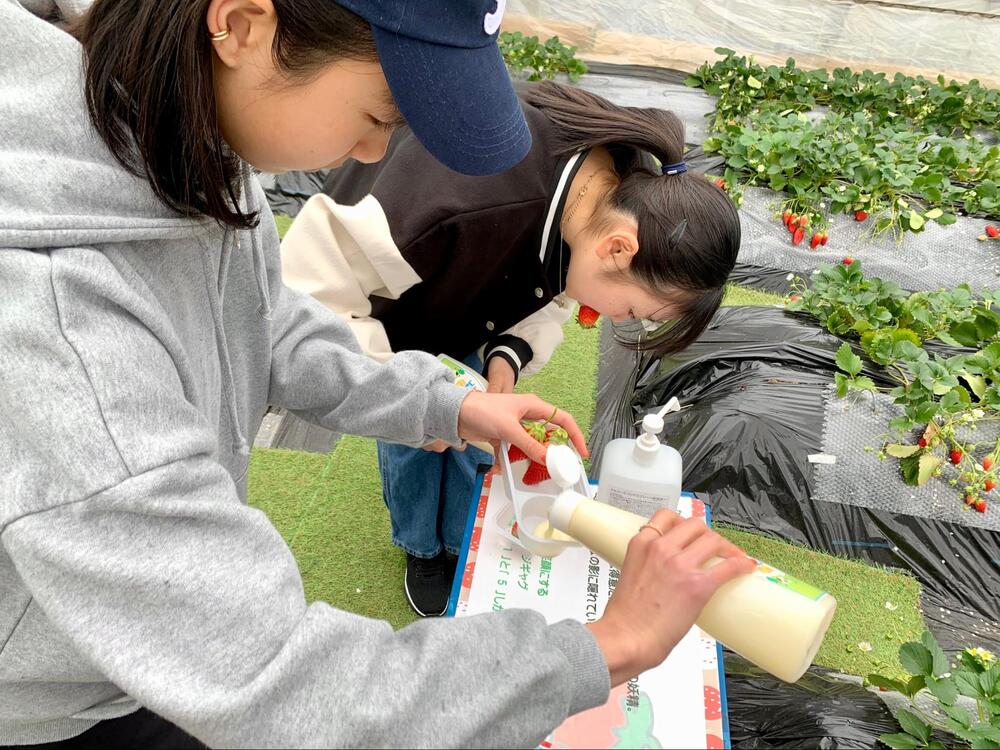
Being able to enjoy fresh strawberries with sweet condensed milk until the end of the 60-minute time limit is a great feature for those with a sweet tooth.
There was also a cute photo spot like this inside the house.
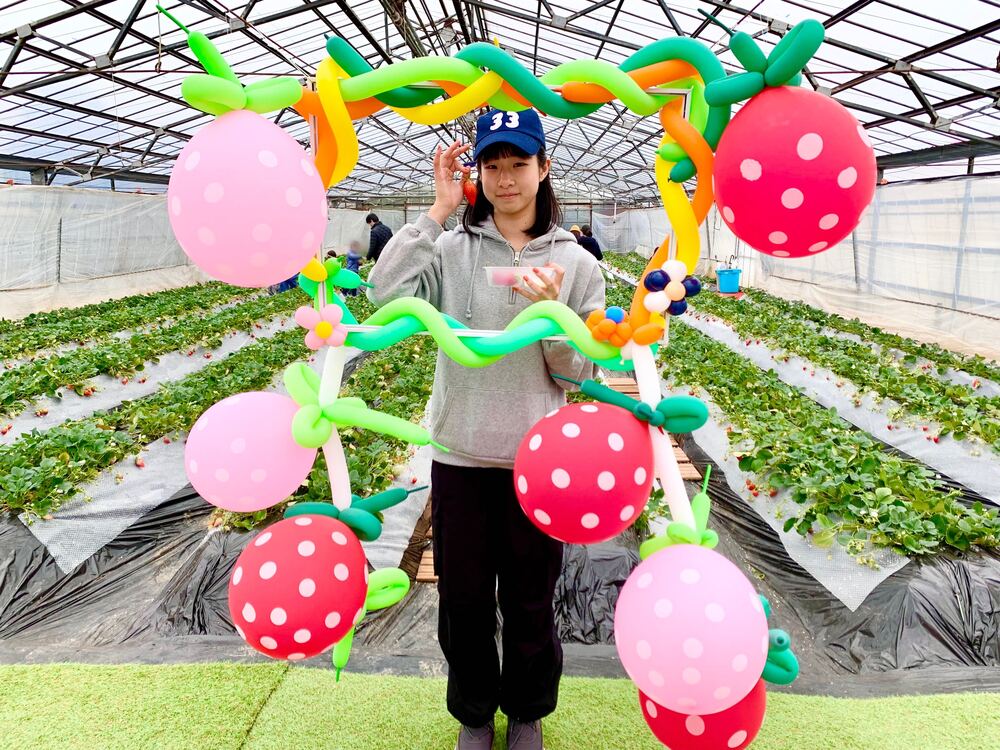
This balloon art is handmade by Mr. Miyamoto. If you time it right, you’ll also have a chance to get cute strawberry balloon art.
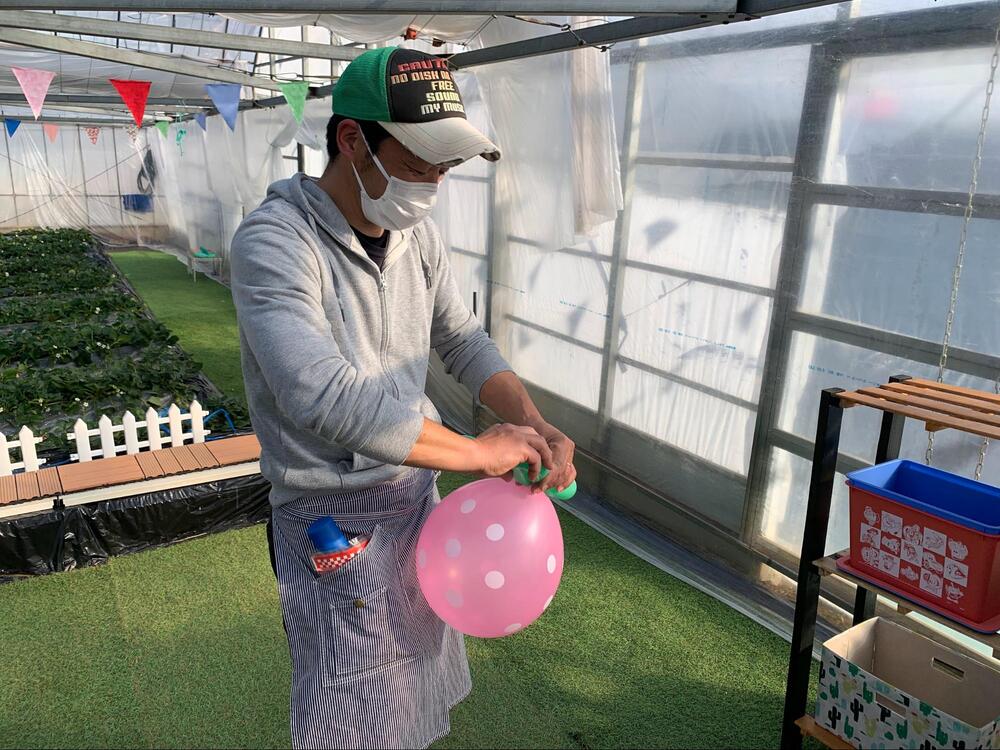
Kashima Harvest’s strawberry picking is full of various ideas, and it is a recommended spot for those who want to enjoy delicious strawberries, as well as those who want to create unforgettable family memories!

You can also purchase freshly picked strawberries at the sales office. Bright red strawberries with cute strawberry flowers are perfect as souvenirs from your trip.

This time, we introduced Kashima Harvest, a recommended spot where you can enjoy all-you-can-eat strawberry picking for a relaxing 60 minutes.
I hope you all enjoy strawberry picking in Hamamatsu and Lake Hamana for your spring trip or leisure activities.
|| Kashima Harvest Facility Information ||
〒431-1202
3624 Kurematsucho, Chuo-ku, Hamamatsu City
TEL : (053)487-0875
Business hours : 10:00-17:00
*Changes depending on the season
*Depending on the condition of the strawberries, the park may be closed or close early, so please be sure to call us before coming.
Prices vary depending on the season
Click here to make a reservation
Hamamatsu/Lake Hamanako choitabi travel guide
https://hamamatsuat.hamamatsu-daisuki.net/experience/727/
Click here for Kashima Harvest official website
